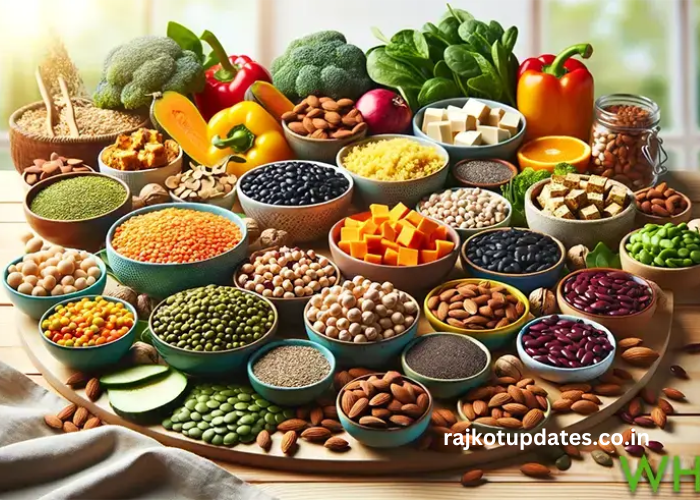The idea of eating fruit and vegetable peels might seem unusual to many, but it is a practice with significant health benefits. Often discarded as waste, peels are packed with essential nutrients that can enhance your overall well-being. In this comprehensive guide, we explore the nutritional benefits of consuming peels, their potential health advantages, and practical ways to incorporate them into your diet. Wellhealthorganic.com provides insightful information to help you unlock the potential of these often-overlooked parts of your produce.
The Nutritional Powerhouse of Peels
Fruit and vegetable peels are nutritional powerhouses. They are rich in vitamins, minerals, fiber, and antioxidants that are vital for maintaining good health. For example, apple peels are high in fiber and vitamin C, while potato skins contain significant amounts of potassium and iron. By eating the peels, you maximize the nutritional value of your food.
Vitamins and Minerals in Peels
Peels are abundant in vitamins and minerals. Citrus peels, for instance, are loaded with vitamin C and flavonoids, which boost the immune system and improve skin health. Banana peels contain potassium, magnesium, and vitamins B6 and B12, which are essential for nerve function and energy production. Incorporating these nutrient-rich peels into your diet can help meet your daily nutritional requirements.
Fiber: The Digestive Benefits of Peels
Dietary fiber is crucial for a healthy digestive system, and peels are an excellent source of this nutrient. Fiber helps regulate bowel movements, prevents constipation, and supports a healthy gut microbiome. For example, the skin of an apple contains more fiber than the flesh, aiding in better digestion and promoting feelings of fullness.
Antioxidants: Fighting Free Radicals
Peels are rich in antioxidants, which help fight free radicals in the body. Free radicals can cause oxidative stress, leading to chronic diseases such as cancer, heart disease, and diabetes. Grape skins, for example, contain resveratrol, a powerful antioxidant that protects against heart disease and supports overall health. Including antioxidant-rich peels in your diet can help protect your body from oxidative damage.
Weight Management and Peels
Eating peels can support weight management efforts. The high fiber content in peels promotes satiety, helping you feel fuller for longer periods and reducing overall calorie intake. For example, the fiber in apple peels can help control appetite and prevent overeating. Incorporating peels into your meals can be a simple yet effective strategy for maintaining a healthy weight.
Peels and Blood Sugar Control
Certain peels can help regulate blood sugar levels. The fiber in peels slows down the absorption of sugar into the bloodstream, preventing spikes in blood sugar levels. Potato skins, for instance, have a lower glycemic index compared to the flesh, making them a better option for people managing diabetes. Including peels in your diet can contribute to better blood sugar control.
Boosting Heart Health with Peels
Peels can contribute to heart health by providing essential nutrients and antioxidants. Citrus peels, for example, contain hesperidin, a flavonoid that has been shown to lower cholesterol levels and improve blood vessel function. The potassium in banana peels helps regulate blood pressure, reducing the risk of heart disease. Consuming peels can be a heart-healthy choice.
Enhancing Skin Health with Peels
The vitamins and antioxidants in peels can benefit skin health. Vitamin C in citrus peels promotes collagen production, enhancing skin elasticity and reducing wrinkles. The antioxidants in grape skins protect the skin from UV damage and improve overall skin appearance. Incorporating peels into your diet can contribute to healthier, more radiant skin.
Peels and Immune System Support
Peels are packed with nutrients that support the immune system. The vitamin C in citrus peels boosts immune function, while the antioxidants in various peels protect against infections. Apple peels, for instance, contain quercetin, an antioxidant that has anti-inflammatory and immune-boosting properties. Including peels in your diet can help strengthen your immune system.
Practical Tips for Eating Peels
Incorporating peels into your diet can be simple and delicious. Here are some practical tips:
- Wash Thoroughly: Ensure peels are clean and free from pesticides by washing them thoroughly.
- Organic Options: Choose organic produce to avoid pesticide residues on the peels.
- Smoothies and Juices: Blend peels into smoothies and juices for added nutrients.
- Baking and Cooking: Use peels in baking, such as adding apple peels to muffins or banana peels to bread.
- Snacks: Make crispy snacks by baking potato skins or citrus peels.
These tips can help you enjoy the nutritional benefits of peels in various ways.
Recipes Featuring Peels
Incorporating peels into recipes can be creative and tasty. Here are a few ideas:
- Apple Peel Chips: Toss apple peels with a bit of cinnamon and bake until crispy.
- Citrus Peel Marmalade: Cook citrus peels with sugar and water to make a tangy marmalade.
- Stuffed Potato Skins: Fill potato skins with vegetables, cheese, and herbs for a nutritious snack.
- Banana Peel Stir-Fry: Sauté banana peels with garlic, soy sauce, and vegetables for a unique dish.
These recipes showcase how peels can be used in delicious and nutritious meals.
Addressing Common Concerns
There are common concerns about eating peels, such as pesticide residues and bitterness. Here’s how to address them:
- Pesticides: Opt for organic produce or thoroughly wash and scrub non-organic fruits and vegetables.
- Bitterness: Some peels, like citrus, can be bitter. Cooking or soaking them can reduce bitterness.
- Texture: If the texture of peels is a concern, try blending them into smoothies or incorporating them into cooked dishes where they become softer.
Addressing these concerns can make eating peels more appealing and enjoyable.
Environmental Benefits of Eating Peels
Eating peels not only benefits your health but also the environment. By consuming peels, you reduce food waste and make the most out of the produce you buy. This practice can contribute to a more sustainable lifestyle and reduce the environmental impact of food production.
Conclusion
Incorporating fruit and vegetable peels into your diet is a simple yet effective way to boost your nutrient intake and enjoy numerous health benefits. From enhancing digestion and supporting heart health to improving skin health and boosting the immune system, peels are a valuable addition to a balanced diet.
Wellhealthorganic.com provides comprehensive insights and practical tips to help you make the most of these nutritional powerhouses. Embrace the habit of eating your peels and unlock their full potential for a healthier, more sustainable lifestyle.


